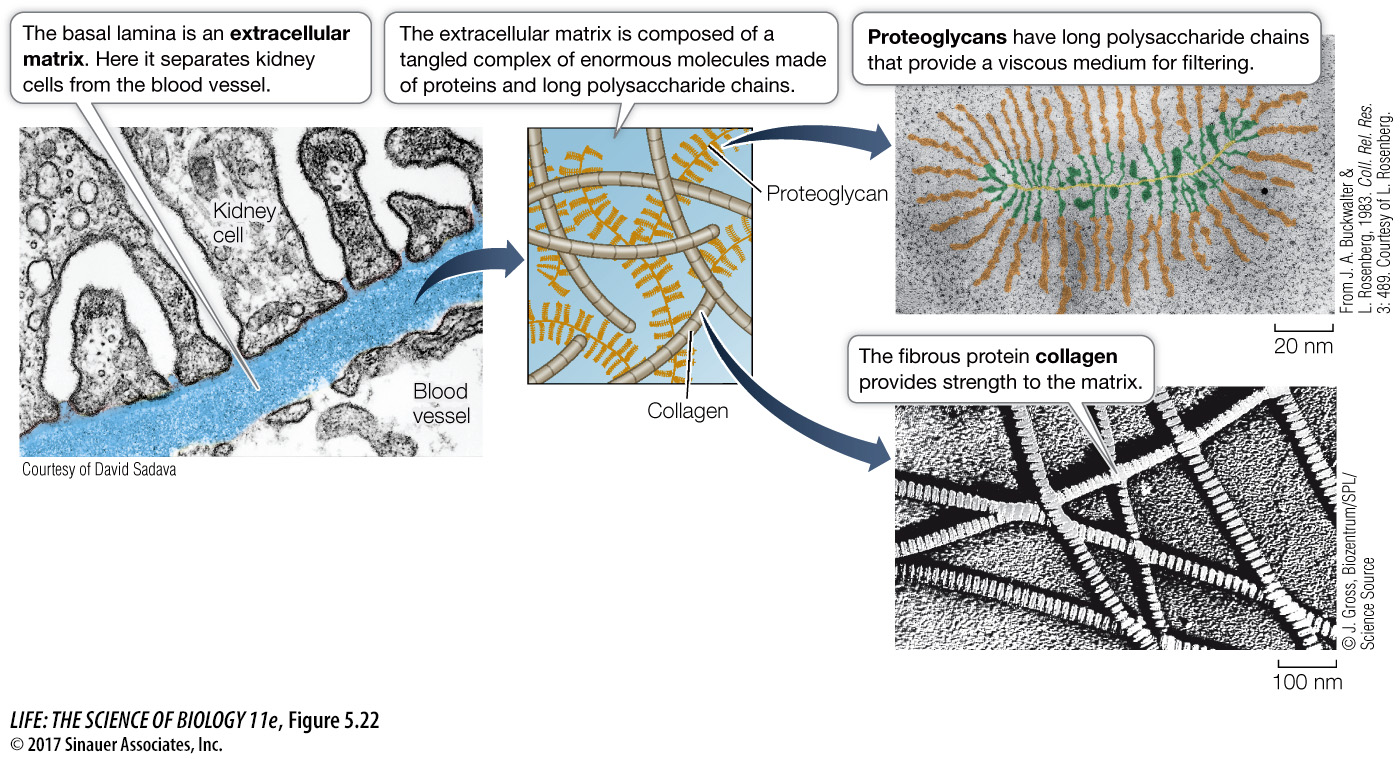The extracellular matrix supports tissue functions in animals
Animal cells lack the semirigid wall that is characteristic of plant cells, but many animal cells are surrounded by, or in contact with, an extracellular matrix. This matrix is composed of three types of molecules: fibrous proteins such as collagen (the most abundant protein in mammals, constituting over 25 percent of the protein in the human body); a matrix of glycoproteins termed proteoglycans, consisting primarily of sugars; and a third group of proteins that link the fibrous proteins and the gel-

The functions of the extracellular matrix are many:
It holds cells together in tissues. In Chapter 6 we will see how there is an intercellular “glue” that is involved in both cell recognition and adhesion.
It contributes to the physical properties of cartilage, skin, and other tissues. For example, the mineral component of bone is laid down on an organized extracellular matrix.
It helps filter materials passing between different tissues. This is especially important in the kidney.
It helps orient cell movements during embryonic development and during tissue repair.
It plays a role in chemical signaling from one cell to another. Proteins connect the cell’s cell membrane to the extracellular matrix. These proteins (for example, integrin) span the cell membrane and are involved with transmitting signals to the interior of the cell. This allows communication between the extracellular matrix and the cytoplasm of the cell.